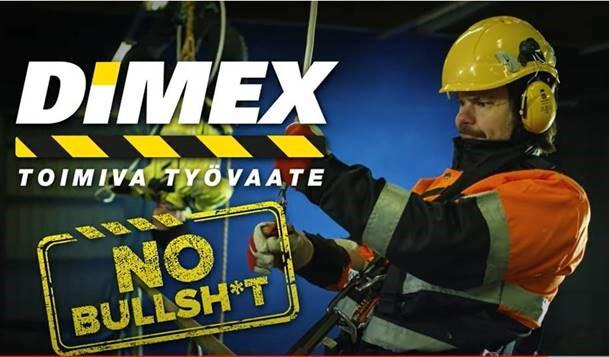I could define quality through the sentences I heard from Tuire: "it is occupational safety, the durability of the garment, its functionality and appearance. This way, the customer gets a greater benefit for the price and a longer service life, as well as saving money, increasing work flow, job satisfaction and occupational safety."
A Dimex product found on a retailer's shelf has gone through quite a process before it is available to the end user. The customer's purchase decision is related to, among other things, the expectation of good quality and that the manufacturer is also responsible for the product it manufactures. It is perhaps rare to think about what goes into making that particular product before it is on sale. The quality of a product is built on high-quality materials and accessories from responsible suppliers, but also on how the product is designed, produced and inspected.
We have always monitored quality, but it is an area where there is always room for improvement and development. One could say that it is a never-ending process in which perfection can never be achieved. This year I have been able to participate in this process myself, developing and monitoring everything it entails. The process of designing a new product from scratch is an interesting process. But the quality monitoring of an existing product and the related measures are no less interesting.
A quality product requires quality materials, including nipples and buttons, and even threads. The designer designs the product with the users and applications for which the product is designed in mind. High-quality materials must be found that are suitable for the intended use. Workwear as clothing imposes certain requirements on what it should be like, including materials, not to mention certificates. Similarly, when sewing a sample, samplers test every seam and detail to see if it is possible to implement it in production with the structures that the designer has designed it with and whether the product will withstand use once implemented.
Possibly different prototypes are used by test users and through the feedback we receive from them we learn what needs to be improved or changed so that the product is of such a quality that it will serve future users. This process can take up to a year and a half before the new product is available to everyone. After that, the monitoring only increases, we closely monitor what customers think of the product and it may be that the product in question creates a desire in the market for another product, the idea of which was originally born precisely through this existing product.
The production batches themselves become inspection batches, which the quality inspector checks very carefully. The manufacturing site receives a report on the work they have done. The manufacturing sites themselves also report to us in advance about each batch. This process also makes us aware of where in the product development or production phase we may need to make changes. Our work is therefore very close cooperation with the manufacturing sites. New products cannot be sold until the inspection batches have been checked by us in Leppävirta and have received positive feedback.
It should not be forgotten that we also work closely with our suppliers of materials and accessories regarding quality. We give them feedback so that they can also develop their own products with the future in mind.
Customer feedback is important to us and we take every feedback about the product very carefully. Once a month we review feedback and complaints. Our operations are flexible and we are able to make quick decisions and changes to the products if we see them as appropriate based on this feedback. The process and customer feedback teach us to improve quality in every aspect of our company's operations.
We at Dimex are proud of our products, but we are also very proud of our customers. You are one link in our quality process, helping to develop the quality of both the product and our operations. Thank you and bow to you for that.
Anne Lamberg
Team Manager, Production & Sales

Dimex quality process
Subscribe to our newsletter
Be the first to know about new collections and exclusive offers.